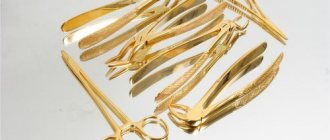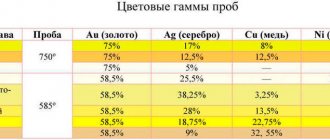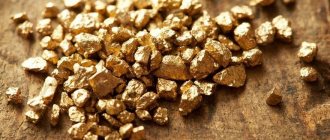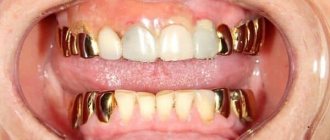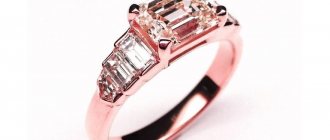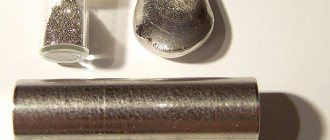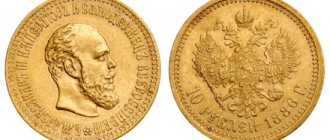In the periodic table of chemical elements, gold is number 79, but its importance for our civilization is enormous. This mineral has been known since ancient times. Alchemists of the Middle Ages endowed it with mystical properties, and for many years tried unsuccessfully to recreate it in their laboratories. The Incas deified gold, considering it the sacred metal of the Sun God. Because of him, states collapsed and new empires rose from the ashes. Our story about the amazing properties of gold
and its biological role in the human body.
Gold in the optimal natural form and dosage is contained in beekeeping products - such as pollen, royal jelly and drone brood, which are part of many natural vitamin and mineral complexes: “Leveton P”, “Elton P”, “Leveton Forte”, “ Elton Forte", "Apitonus P", "Osteomed", "Osteo-Vit", "Osteomed Forte", "Eromax", "Memo-Vit" and "Cardioton". That is why we pay so much attention to each natural substance, talking about its importance and benefits for the health of the body.
History of the origin of Metal of kings and pharaohs
Archaeologists are confident that the history of the origin of gold
is closely related to the development of human civilization.
The first gold deposits were allegedly discovered in the 5th millennium BC, in the Middle East. The oldest jewelry made from “ solar metal
,” dating back to the 3rd millennium BC, was discovered during excavations of Egyptian and Sumerian tombs.
Latin name for gold: Aurum
(“yellow”) originates from the name of the ancient Roman goddess of the dawn, Aurora. European and Proto-Slavic transcriptions of this word have the same root and also denote the color of the noble metal.
With the rise of the Roman Empire, the geography of gold mining moved to Western Europe (the territory of modern Spain, Austria and Hungary). And after the discovery of the New World, the so-called “gold rush” swept the world.
which largely predetermined the paths of further development of most major powers.
In Russia, the development of its own gold deposits began only in the middle of the 18th century. The first deposits of the precious metal were discovered in the Arkhangelsk province, and large-scale mining began in the Urals, after the discovery of gold-bearing veins by Erofey Markov.
Gold was first discovered in living organisms by the French chemist Claude Louis Bertoglio. The scientist synthesized the smallest particles of this metal from plant ash.
Interesting fact.
According to one version, “
solar metal
”, in the literal sense, is a gift from heaven. Scientists believe that gold particles could have settled on Earth after the explosion of a neutron star.
Finding gold in nature
Like silver, gold is found in nature
mostly in a native state.
At the same time, “ solar metal
” is extremely rare in its pure form. The content of various impurities (copper, silver, iron, etc.) in gold nuggets ranges from 2 to 50 percent. The volume of precious metal contained in the earth's crust is only 4 mg per ton of rock.
Interesting fact.
The largest gold nugget, the “Holtermann plate,” was discovered in 1872 in Australia. This giant, made of gold and quartz, weighed almost 300 kg. After melting, about 100 kg of noble metal came out of it.
But in the waters of the World Ocean there are truly countless reserves of gold hidden (about 5 kilograms per cubic kilometer of water). In places of its highest concentration, the water has a characteristic greenish tint. The leader in the content of this metal is the Caribbean (15-18 mg per ton of sea water). However, it is extremely difficult to synthesize it in this way.
Copper sulfate CuS04-5H20
Receipt. For medical purposes, copper sulfate is usually prepared by dissolving high-purity copper metal in sulfuric acid. To speed up the reaction, some nitric acid is sometimes added:
3Cu + 3H2S04 + 2HN03 - 3CuS04 + 2NOT + 4H20
Remove excess nitric and sulfuric acids. The residue is dissolved in water, from which, upon evaporation, transparent blue crystals fall out.
Determination of authenticity. The authenticity of the drug is determined by placing an iron plate in its solution (1:20), which is covered with a red coating of metallic copper:
CuS04 + Fe -*- FeS04 + Cui
This reaction is possible in accordance with the values of the redox potentials of the pairs £°(Cu27Cu) = +0.345 V and £°(Fe27Fe) = -0.473 V (AE° > 0, AG0 < 0).
A characteristic reaction to determine the authenticity of copper ions is interaction with ammonia. First, a blue precipitate of copper hydroxide appears, which dissolves in excess of the reagent to form an ultramarine-colored complex salt:
CuS04 + 2NHr H20 - (NH4)2S04 + Cu(OH)2i
Cu(OH)2 + 2NH3H20 + (NH4)2S04 – [Cu(NH3)4]S04 + 4H20
The drug gives a characteristic reaction to sulfates: when interacting with a solution of Ba(N03)2, a white precipitate of BaS04 precipitates. These reactions are pharmacopoeial (official).
The USP provides another test of authenticity. When a solution of copper sulfate is exposed to a solution of potassium ferrocyanide K4[Fe(CN)6], a red-brown precipitate of copper ferrocyanide Cu2[Fe(CN)6] is released, soluble in ammonia and insoluble in dilute acids:
2CuS04 + K4[Fe(CN)6] – Cu2[Fe(CN)6]i + 2K2S04
At a low concentration of copper, a precipitate may not form and a pink color of the solution appears.
As an unofficial reaction, the formation of a black precipitate of copper sulfide can be used:
CuS04 + Na2S —»- CuSi + Na2S04
The precipitate is soluble in hot concentrated nitric acid HN03; this releases brown gas:
CuS + 10HNO3 - Cu(N03)2 + 8N02t + H2S04 + 4H20
Copper ions are characterized by interaction with amino acids, polyhydric alcohols, and organic acids containing hydroxyl groups (tartaric, citric acids). In this case, water-soluble complex compounds are formed, colored intensely blue. Reactions should be carried out in a slightly alkaline environment to deprotonate carboxyl and amino groups:
CH2SOSG „. CH2CO(X ^.—NH22 1 +Cu*^ I «>Cu(H1 I
NH2 H2N ^OOСН,
Purity tests. The chloride content should not exceed 5 ■ 10-3%. The permissible iron content is no more than 3 ■ 10~2%.
In accordance with USP, purity tests include determination of the content of acceptable impurities using atomic absorption spectrophotometry: sodium (<0.03%, X = 589 nm), potassium (£0.01%, X = 767 nm), calcium (<0.005 %, X = 423 nm), iron (<0.003%, X = 248 nm), nickel (<0.005%, X = 232 nm). In addition, volatile organic impurities are determined by gas chromatography.
Quantitation. Copper sulfate is determined by the iodometric method. When exposed to potassium iodide, free iodine and slightly soluble white copper(1) iodide are released:
2CuS04 + 4KI – 2Culi + I2 + 2K2S04
The released iodine is titrated with 0.1 mol/l sodium thiosulfate solution until the blue color of the iodine-starch complex disappears.
In accordance with the Global Fund, the preparation must contain no less than 98 and no more than 101.0% copper sulfate (weathering limit).
The quantitative content of CuS04 in the preparation can be determined complexometrically by titration with Trilon B in the presence of indicators: pyrocatechol violet, acid chrome blue, special chrome black.
Scope of gold
Scope of gold
is quite wide and is not limited to the jewelry industry alone.
Let's see what other purposes “ solar metal
” is used for.
• Gold is one of the main means of investment. It is a stronghold of financial stability in most countries.
• In dentistry, for the manufacture of dentures and crowns.
• Due to its high degree of electrical conductivity, it is used in microelectronics, for the manufacture of contacts and electroplated coatings.
• In the nuclear field, including for the production of neutron bombs.
• Possessing good corrosion resistance, it is used for amalgamation (coating with a protective film) of metal surfaces.
•Registered as a food additive E175, but is used quite rarely due to its high cost.
Biological role of gold
As with any trace element, the biological role of gold
not fully studied.
In ancient times it was used as a panacea for almost all diseases. In the Ancient East, “ solar metal
” was used as a seasoning for food and drinks, and the Egyptian pharaohs consumed gold powder, being confident that it would not only prolong their life, but also bring them closer to the gods after death.
Among the South American Indians, eating on golden utensils was considered a symbol of reconciliation. In addition, they were convinced that the precious metal was capable of neutralizing any poison that an insidious enemy could use.
With the development of science, most of these myths have been dispelled. This is largely due to the fact that metallic gold reacts very poorly with biochemical reactions. The content of this mineral in the adult human body is approximately 10 mg. Almost half of it is contained in bone tissue. In addition, it is concentrated in the brain, liver and kidneys.
It has been proven that in the body this precious metal performs the following biological functions:
• Has antibacterial properties
, enhancing the effect of silver.
• Helps strengthen the immune system.
• Due to its high degree of electrical conductivity, it participates in the process of transmitting nerve impulses.
• Has an antisclerotic effect.
• Binds hormones in tissues.
Scientists have found that the daily requirement of gold
ranges from 2 to 4 mcg.
You can maintain this balance by wearing jewelry made from this noble metal or taking special vitamin and mineral complexes
. We can recommend the Leveton Forte dietary supplement, which is made only from natural ingredients. These are Leuzea roots, bee pollen and drone brood. Thanks to this, the preparation contains all the microelements and amino acids necessary for humans.
Some researchers believe that even drinking 2 liters of pure water per day will lead to a deficiency of gold in the body.
you don't have to worry.
Gold deficiency in the body
Gold is one of the first metals discovered by man in ancient times (4 thousand years BC). A small amount of it is present even in our body. How much gold is in the human body? This number is 10 mg. It is concentrated mostly in the bones, blood, liver and kidneys.
However, gold is used in the treatment of various types of arthritis and immune system diseases.
In large quantities it is toxic and can lead to poisoning, the side effects of which are vomiting and dizziness, as well as:
- metallic taste in the mouth;
- active secretion of saliva;
- diarrhea or intestinal pain;
- vomit;
- joint pain;
- skin rash;
- weight loss.

Aurum is found in the body not only in humans. It is found in the blood of cats and dogs, as well as in corn. 1 cubic km of water (river or sea) contains approximately 5 kg of gold. It has high thermal and electrical conductivity. It lends itself well to forging and soldering, and therefore is widely used in jewelry and in the manufacture of contacts for radio components.
https://www.youtube.com/watch?v=ntt2lWZFLS4
What properties does gold have?
- As long as it existed, it had so much value for our ancestors, and evidence of this is found in the Bible, the Iliad, the Odyssey and other works of antiquity. Alchemists called him the “King of Metals” and many times tried to discover a way to transform various metals into gold. Mystical properties are often attributed to it.
- In Ancient Asia, the yellow metal was added to coffee, tea, alcoholic and other drinks, even to food as a seasoning. And Indian tribes believed that consuming gold revealed the ability to levitate. Pharaohs also ate gold powder. But they had a slightly different goal: they believed that this lengthens life, and after death makes it easier to reunite with the gods.
- Among the Incas and Aztecs, for the purpose of reconciliation, representatives of warring tribes ate on golden dishes. At the same time, they believed that the poison could not have its deadly effect if it was placed in a gold bowl.
- Our ancestors knew how aurum affects humans. They used it to treat the heart and nervous system, anxiety, depression and general weakness. The ancient Greeks and Romans believed in the love spell properties of gold.
Gold deficiency in the body practically does not manifest itself in any way. However, there is an opinion that a lack of “solar metal” leads to a shortened life span and the early development of age-related diseases. Therefore, if you want to look young at your own “golden” wedding, do not forget to wear a wedding ring.
Use of gold in medicine
Perhaps many people do not know that the use of gold in medicine
very wide. Preparations containing it are used to treat the following diseases.
• Joint diseases: osteochondrosis, deforming, rheumatoid and psoriatic arthritis, Felty's syndrome.
• Dental diseases (periodontal disease).
• Vascular diseases (hypertension).
• Liver diseases.
• Autoimmune (systemic lupus erythematosus).
• For depressive disorders.
• For the treatment of malignant lung tumors and a number of other oncological diseases.
• Gold iodide is widely used to treat atherosclerosis, and such drugs have virtually no side effects.
• In plastic surgery and cosmetology.
Gold poisoning. Consequences of overdose
It must be said that gold poisoning
– a rather rare phenomenon.
You can get a dangerous dose to your health in jewelry production by inhaling tiny particles of this metal. Also, such poisoning
is possible with an overdose
of gold-containing
drugs.
The famous favorite of King Henry II, Diana de Poitiers, famous for her extraordinary beauty, took a certain “elixir of youth” every morning, purchased for fabulous money from a healer. The mysterious substance supposedly included gold chloride. Having examined a strand of the maid of honor's hair, scientists found that the content of precious metal in it exceeded the norm by 500 times! Thus, it was proven that Diana was brought to the grave by her favorite elixir.
The toxic dose of gold has not been precisely determined, but it should be remembered that it is a heavy metal and therefore potentially dangerous. People suffering from the following diseases should be especially careful when taking medications containing it.
Useful properties of gold
Ancient healers believed that gold:

- Improves heart function;
- Relieves stress, depression;
- It even lengthens life.
Gold resembles the sun and has warming properties, which is important when there is a lack of energy. In the Middle Ages, they took drinking gold for heart health, and they not only drank gold, but also chewed gold leaves and sprinkled gold shavings on their food.
Even tuberculosis and syphilis were treated with gold.
Properties of gold:
- Reduces inflammation;
- Improves metabolic processes;
- Relieves allergies;
- Improves memory;
- Increases body resistance and endurance;
- Has a beneficial effect on the nervous system.

